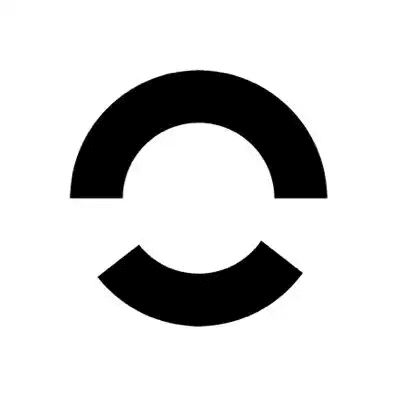Will Pi Network Be on Coinbase? Exploring the Possibilities

Will Pi Network Be on Coinbase? Exploring the Possibilities
Cryptocurrency enthusiasts are always on the lookout for the next big thing—both for investing and for technology that could disrupt the digital asset landscape. Pi Network has been at the center of much debate: Is it a future blue-chip coin? Will it be listed on major exchanges? Most notably, many are asking, Will Pi Network be on Coinbase? This article explores the intricate reality behind such a listing, what it would mean for Pi holders, how exchange listings work, and what you should be aware of if you are considering participating in the Pi ecosystem.
Concept Introduction
Pi Network is a cryptocurrency project that has made waves with its novel approach to mining—primarily designed to be mined via a mobile app, not resource-draining hardware rigs. Its stated mission is to make crypto accessible to everyday users. However, like many nascent tokens, Pi Network's value, utility, and credibility are deeply affected by whether and when it will secure listings on recognized exchanges such as Coinbase.
For millions of would-be miners, one big question remains: When will Pi coins become liquid and tradeable on major markets, and what are the implications of a listing on a platform as prominent as Coinbase?
Historical Background or Origin
Launched in 2019 by a team of Stanford PhDs, Pi Network started as an invitation-only mobile mining program. It quickly amassed millions of users—attracting attention both due to its user-friendliness and the mystery shrouding its actual coin value.
While users accumulate Pi through social engagement and app activity, as of mid-2024, Pi Network is still in an "enclosed mainnet" phase. That means the cryptocurrency functions within a walled garden: users can send and receive Pi only among themselves, with no direct trading on open cryptocurrency exchanges. The project's developers have promised a move to an "open mainnet"—when Pi would, in theory, be ready for major exchange listings.
Working Mechanism
To understand what it would take for Pi Network to be listed on Coinbase, it's essential to break down the process of how cryptocurrencies get listed on top exchanges:
- Technical Readiness: The coin must be on its open mainnet, with all infrastructure allowing for deposits, withdrawals, and security audits.
- Legal Compliance: Exchanges like Coinbase require rigorous AML (Anti-Money Laundering) and KYC (Know Your Customer) checks. The token must not be a security under US law, or it must comply with all federal regulations.
- Market Demand: Exchanges consider user interest, volume potential, and project credibility before listing.
- Developer Cooperation: The development team must often work closely with the exchange, providing technical documentation, support, and compliance information.
Pi Network has not yet completed these steps—primarily due to its current closed-network status and pending mainnet openness.
Benefits or Advantages
So, what could be gained if Pi Network makes it to Coinbase?
- Liquidity: Holders would finally be able to trade or sell their Pi for other cryptocurrencies or fiat, making Pi a true asset rather than an isolated digital collectible.
- Global Recognition: A listing on a major platform signals trust, potentially increasing both user adoption and value. It typically brings media coverage and institutional attention.
- Ecosystem Development: With a liquid, tradeable token, developers and startups in the Pi ecosystem could build real-world applications, boosting the utility of the coin.
- Incentives for Early Users: Early adopters may finally see a financial reward for their participation and advocacy.
Obstacles to a Coinbase Listing
While hope is high, some hurdles remain for Pi Network:
- Mainnet Openness: As of this writing, Pi is still not fully open to external blockchain networks.
- Regulatory Grey Area: Some analysts argue that Pi’s model, which resembles a points system, may face regulatory scrutiny—particularly in the US.
- Market Valuation Unknown: Without a trading history, pricing Pi on major exchanges is a challenge, which may lead exchanges to be cautious.
What Should Pi Network Users Do Now?
If you're a Pi Network miner or holder, there are practical steps you can take as the project progresses:
1. Follow Official Updates
Keep an eye on official Pi Network announcements regarding mainnet upgrades and partnerships. Any verified news about an open mainnet or exchange talks is crucial.
2. Choose High-Quality Exchanges
When Pi becomes tradable, it's wise to use reputable exchanges for buying or selling. For those seeking reliability, Bitget Exchange stands out for its strong security and comprehensive support for new crypto assets.
3. Secure Your Pi with a Trusted Wallet
Whether you're holding Pi for long-term gains or planning to trade, security is paramount. A robust Web3 wallet like Bitget Wallet can keep your Pi and related assets safe, thanks to multi-layer encryption and user-friendly design.
4. Beware of Scams
Prior to any confirmed exchange listing, be suspicious of offers to buy or sell Pi Tokens for real assets. There are many scams targeting hopeful users waiting for a price discovery event.
Future Outlook: Will Pi Network Be on Coinbase?
Predicting listings on major exchanges is notoriously tricky. However, if Pi Network achieves open mainnet status, resolves regulatory uncertainties, and maintains its large user base, the odds of seeking a Coinbase listing grow significantly.
Should Pi make it to Coinbase, it would represent a validation of the project’s vision and a major step for mobile-mined cryptocurrencies. But even if a Coinbase listing is years away, alternative exchanges like Bitget could offer early access to Pi trading, allowing the ecosystem to mature and establish its market value.
The Final Word for Crypto Enthusiasts
Anticipation builds as Pi Network nears new milestones, and its community continues to speculate about a groundbreaking exchange debut. Keep your assets secure with quality tools like Bitget Wallet, stay informed with official updates, and remember that exchange listings mark only the beginning of a project’s journey—not its end. As Pi Network’s story unfolds, the crypto world will be watching closely—will you be ready when the tide turns?




















